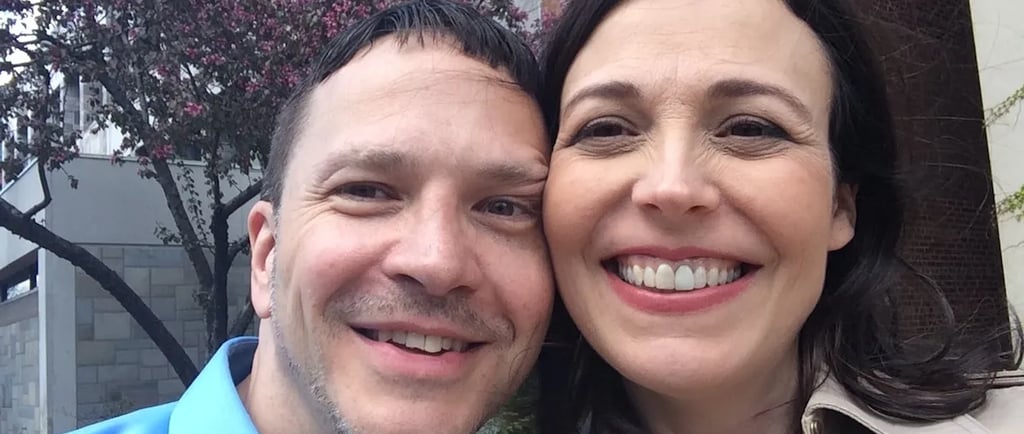Blood on the Dance Floor: The Rise and Ruin of Michael Alig
This article exposes the dark and tragic story of Michael Alig, the infamous Club Kid leader whose vibrant rise in 1990s NYC nightlife ended in a gruesome murder. From a lonely childhood to becoming the ringleader of a drug-fueled, chaotic scene, Alig’s world was a mix of glitter and decay. The brutal killing of Angel Melendez inside Alig’s apartment reveals the destructive cost of fame and excess. Exploring Alig’s fall, prison time, and eventual overdose death, the piece is a haunting look at how fame can destroy humanity and the souls caught in its wake.
DISTURBING CASESGRIM REALITYSINS OF THE FLESHABYASS
7/3/20254 min read


Blood on the Dance Floor: The Rise and Ruin of Michael Alig
Michael Alig wasn’t born to blend in — he was born to rupture. A queer kid marinated in rejection and small-town suffocation, raised in South Bend, Indiana — the kind of place that chews up the strange and spits them into silence. His father vanished. His mother was emotionally distant and cold. Michael was bullied, beaten, humiliated — made to feel like his very existence was offensive.
So he fought back. With color, chaos, and control.
By the time he landed in New York City in the 1980s, Alig had one mission: become famous or die trying. He dropped out of college, dropped acid, and dropped headfirst into the pulsating underworld of Manhattan nightlife. What he built was bigger than a scene — it was a cult. He became the deranged ringmaster of the Club Kids, a drugged-up tribe of costumed freaks, drag messiahs, and walking hallucinations who blurred the lines between art, identity, and self-destruction.
They were beautiful — and rotting.
The Club Kids didn’t party — they ritualized decadence. Clubs became temples. Drugs were sacraments. Sex, spectacle, and psychological collapse were currency. Alig ruled it all — intoxicated with attention, power, and speedballs. Limelight. Tunnel. Palladium. He was the architect of wildness, and his ego had no ceiling.
But there’s no such thing as endless height. Eventually, something had to snap. And in 1996, it did.
Murder in the Mirror Ball
Angel Melendez was no stranger to Alig. He was a fellow Club Kid, a small-time ecstasy and ketamine dealer — but more importantly, he was a breathing person with a soul. On March 17, 1996, inside Michael Alig’s filthy East Village apartment, that soul was snuffed out in the most sickening and savage way imaginable.
Michael and his roommate, Robert “Freeze” Riggs, were strung out — heroin, coke, K, pills — a pharmacy of psychosis. A dispute over drug money erupted into full-blown violence. First came the fists. Then the hammer.
They smashed Angel’s skull with it — again and again, until blood painted the walls and bone cracked like cheap plaster. He tried to fight back, but the drugs slowed him. They broke his ribs with kicks. Then — and this is real — they injected him with Drano. He convulsed, screamed, vomited as his insides burned from the chemicals. His lungs filled with fluid. He begged. They silenced him with duct tape and shoved a pillow over his face.
He died not instantly, but slowly, horrifically. Every moment agony.
His corpse was left in the bathtub. For days.
Covered with baking soda. Sprayed with cologne. Ice packs and air freshener couldn’t hold back the stench of decay. While Angel’s body swelled, turned color, and split beneath the surface — Michael Alig partied. He invited people over. He did drugs. The bathroom was locked, the music was loud, and the walls hid a rotting secret.
When decomposition could no longer be ignored, the horror escalated.
Michael and Freeze dragged the limp, bloated corpse from the tub. With a dull kitchen knife, they sawed off the legs. No skill, no ceremony — just hacking, slicing, slipping in blood. The bones cracked, tendons snapped, and the flesh — now rubbery and bloated — split apart. They shoved the pieces into garbage bags, sealed them with duct tape, and dumped them into the Hudson River.
Angel Melendez, a 25-year-old man, was discarded like trash by the people he partied with.
Fame Fades, But Blood Stains
Michael Alig couldn’t help himself. He bragged. He joked about the killing at parties. Dropped hints in interviews. Thought he was untouchable. But the club kids turned cold. Whispers became investigations. And eventually, the truth surfaced, just like Angel’s remains.
He was convicted of first-degree manslaughter in 1997 and sentenced to 10–20 years in prison. He served 17, trading VIP booths for steel bars and graffiti-stained walls.
In prison, Alig painted. Wrote. Fantasized about his comeback. When he was released in 2014, he tried to return — through social media, documentaries, appearances — but the world had changed. The glory was gone. And the blood hadn’t dried.
He clung to whatever relevance he could muster, sometimes hosting online parties, sometimes selling his artwork smeared with glamorized morbidity. He started dabbling in publicity stunts. But the sparkle was gone. The once-glittering demon king of nightlife was now a ghost fumbling through digital shadows.
Michael Alig’s Death: A Quiet Collapse
On Christmas Eve, 2020, Michael Alig was found dead of a heroin overdose in his Washington Heights apartment. He died like the men he exploited — alone, dirty, used up. He was 54. His body was surrounded by syringes, old clothes, and the echoes of a culture that no longer had space for monsters.
The “Party Monster” was finally gone. The music had stopped. But the body count was still real.
Final Thoughts: No One Dances Forever
Michael Alig wasn’t a genius. He was a symptom — of broken systems, of fame addiction, of a culture that rewards spectacle over soul. He wanted to be worshipped — and in the end, became what he feared most: forgotten.
This story isn’t about clubbing. It’s about the commodification of trauma. It’s about a gay Latino man named Angel Melendez, who became the backdrop for someone else’s ego trip — and whose violent death is often reduced to a footnote.
Michael Alig didn’t kill because he was evil. He killed because he stopped seeing people as real.
Let that sink in.
Sources
🔍 Embedded SEO Keywords: Michael Alig murder, Angel Melendez dismemberment, Club Kids NYC, Party Monster real story, Michael Alig overdose, true crime LGBT, gay nightclub murders, 1990s NYC club culture, dismemberment bathtub murder, famous true crime cases, queer killers, party monster death, club kid crime scene, Limelight Club NYC history
This chilling documentary video, originally posted by Inside Edition, dives deep into the wild rise and horrific fall of Michael Alig and the Club Kids. Featuring raw interviews, archival footage, and unfiltered truths, it exposes the dark underbelly behind the glitter and chaos — the murder, the madness, and the inevitable collapse of a culture built on excess. This isn’t just nightlife history. It’s a neon funeral.
This chilling documentary video, originally posted by Inside Edition, dives deep into the wild rise and horrific fall of Michael Alig and the Club Kids. Featuring raw interviews, archival footage, and unfiltered truths, it exposes the dark underbelly behind the glitter and chaos — the murder, the madness, and the inevitable collapse of a culture built on excess. This isn’t just nightlife history. It’s a neon funeral.


Despair
A dark exploration of societal decay and despair.
Void
+1234567890
© 2025. All rights reserved.
Any comments, business inquiries, ideas, or stories, let us know
